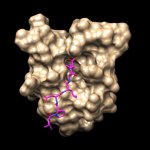
News • Preventing long-term damage
How Covid-19 attacks lung tissues
La Trobe University researchers are the first in the world to characterize precisely how Covid-19 attacks lung tissues — an important step in preventing long-term damage.

La Trobe University researchers are the first in the world to characterize precisely how Covid-19 attacks lung tissues — an important step in preventing long-term damage.

Specialist biorepositories are helping advance personalised medicine by supporting the availability of human tissue for research using digital pathology techniques. The pivotal role of the Glasgow Tissue Research Facility (GTRF) in making tissue available to shape new therapies and treatments was outlined in a presentation to the online “Transforming Digital Pathology – Integrating AI to Move…
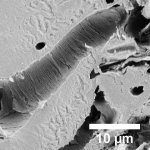
Due to their tissue-like mechanical properties, hydrogels are being increasingly used for biomedical applications; a well-known example are soft contact lenses. These gel-like polymers consist of 90 percent water, are elastic and particularly biocompatible. Hydrogels that are also electrically conductive allow additional fields of application, for example in the transmission of electrical signals…
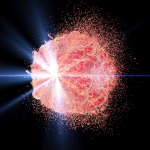
A radiotherapy technique which ‘paints’ tumours by targeting them precisely, and avoiding healthy tissue, has been devised in research led by the University of Strathclyde. Researchers used a magnetic lens to focus a Very High Electron Energy (VHEE) beam to a zone of a few millimetres. Concentrating the radiation into a small volume of high dose will enable it to be rapidly scanned across a…
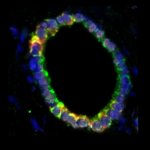
Scientists have used a technique to grow bile duct organoids – often referred to as ‘mini-organs’ – in the lab and shown that these can be used to repair damaged human livers. This is the first time that the technique has been used on human organs. The research paves the way for cell therapies to treat liver disease – in other words, growing ‘mini-bile ducts’ in the lab as…

Research into 3D bioprinting has grown rapidly in recent years as scientists seek to re-create the structure and function of complex biological systems from human tissues to entire organs. The most popular 3D printing approach uses a solution of biological material or bioink that is loaded into a syringe pump extruder and deposited in a layer-by-layer fashion to build the 3D object. Gravity,…
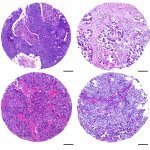
A new generation of tissue microarrays are delivering more efficient and time-effective solutions to answering complex clinical and scientific questions. Sitting at the core of this new approach is digital pathology, allowing specific and targeted analysis of small areas of tissue.
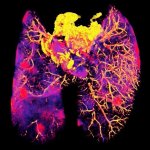
Researchers at the Francis Crick Institute and the University of Western Australia have developed a new imaging method to see where antibiotics have reached bacteria within tissues. The method could be used to help develop more effective antibiotic treatments, reducing the risk of antibiotic resistance.
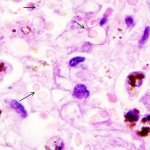
Specialists from the Department of Fundamental Medicine of Far Eastern Federal University (FEFU) with Russian and Japanese colleagues have probed into mechanisms of COVID-19 inside-the-body distribution linked to erythrocytes damaging.

New techniques of infrared-based technology are showing strong potential for cost-effective tissue analysis. Peter Gardner, Professor of Analytical and Biomedical Spectroscopy at the University of Manchester, outlined how hyperspectral imaging coupled with sophisticated computer algorithms can identify and grade cancerous tissue, as well as offer an indication of prognosis. The technique, he…
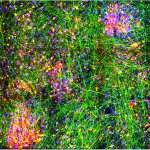
Scientists combined induced pluripotent stem cells (iPSC) and their deep knowledge in the bioengineering of human organoids to for the first time bioengineer the human brain at the macroscale level with comprehensive network function
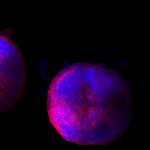
Michigan State University researchers have created for the first time a miniature human heart model in the laboratory, complete with all primary heart cell types and a functioning structure of chambers and vascular tissue.
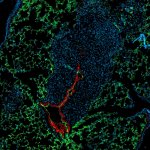
A receptor in the cell layer that lines the blood vessels from the inside stimulates both the formation of new blood vessels in tumors and metastasis.
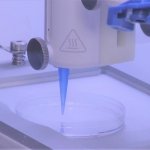
Researchers at Rensselaer Polytechnic Institute have developed a way to 3D print living skin, complete with blood vessels. The advancement, published in Tissue Engineering Part A, is a significant step toward creating grafts that are more like the skin our bodies produce naturally. “Right now, whatever is available as a clinical product is more like a fancy Band-Aid,” said Pankaj Karande, an…
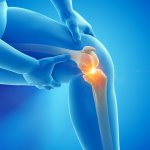
Contrary to popular belief, cartilage in human joints can repair itself through a process similar to that used by creatures such as salamanders and zebrafish to regenerate limbs, researchers at Duke Health found. This process could be harnessed as a treatment for osteoarthritis. Publishing in the journal Science Advances, the researchers identified a new mechanism for cartilage repair.

Twenty people die every day waiting for an organ transplant in the U.S., and while more than 30,000 patients now receive transplants annually, another 113,000 are currently on organ waitlists. Many people see artificially grown human organs as the Holy Grail for resolving the organ shortage, and advances in 3D printing have led to a boom in using that technique to build living tissue constructs…

Scientists in the UK have developed tiny patches of engineered heart tissue that have the potential to be implanted to help people recover from a heart attack. Measuring approximately 3cm x 2cm, the patches contain up to 50 million human-induced pluripotent stem cell derived cardiomyocytes (hiPSC-CM). Yet, these are programmed to turn into working heart muscle that can beat and gradually be…

Blood clotting is one of the most critical, protective processes in human physiology. When something goes wrong with clotting, either because there is too much clotting, leading to a stroke, or not enough, leading to internal bleeding, the outcome can be catastrophic. Now, University at Buffalo researchers have established an in vitro model of this process that will help clinicians improve…

As the largest organ of the human body, our skin is astounding. It protects us from infection, endures radiation, senses temperature, and is flexible enough to withstand our everyday activities. What holds this all together is the protein we all know and love: collagen. In a paper published in Scientific Reports a team from Japan found for the first time that collagen in the skin is organized in…

Researchers at the University of Helsinki have discovered how regenerative capacity of intestinal epithelium declines when we age. Targeting of an enzyme that inhibits stem cell maintaining signaling rejuvenates the regenerative potential of an aged intestine. This finding may open ways to alleviate age-related gastrointestinal problems, reduce side-effects of cancer treatments, and reduce…
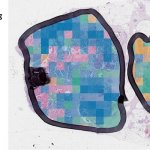
Treating physicians need information about the molecular subtype of the tumor if they are to provide targeted therapy for colorectal carcinoma. A research team from University Hospital Zurich and the University of Oxford have now developed a method to predict the molecular classification of colorectal cancer from digital pathology slides.
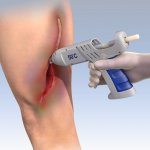
Hot-glue guns can be used for more than putting together cardboard furniture, home decorations, and toys. In fact, researchers at the Technion–Israel Institute of Technology have developed a hot-glue gun to adhere human tissues that have been seriously injured.

The production of artificial organs is a hot research topic. In the near future, artificial organs will compensate for the lack of organ donations and replace animal experiments. Although there are already promising experiments with 3D printers that use a „bio-ink“ containing living cells, a functional organ has never been created in this way. A European consortium coordinated by Dr Elena…
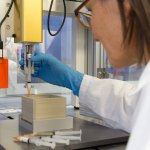
The future of medicine is biological – and scientists hope we will soon be using 3D-printed biologically functional tissue to replace irreparably damaged tissue in the body. A team of researchers from the Fraunhofer Institute for Interfacial Engineering and Biotechnology IGB has been working with the University of Stuttgart for a number of years on a project to develop and optimize suitable…

A team of University of Illinois at Urbana-Champaign researchers led by Bioengineering Professor Stephen Boppart has successfully visualized the tumor microenvironment of human breast tissue shortly after it was surgically removed from a patient in the operating room. The researchers achieved this using a new portable optical imaging system developed in Boppart's lab.